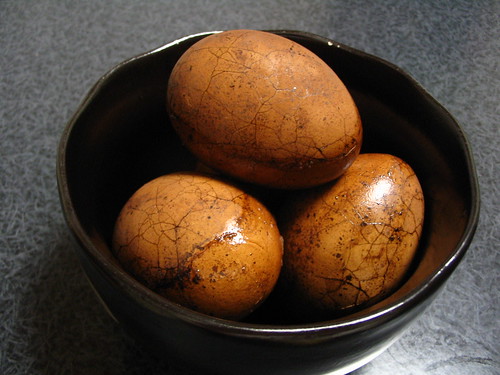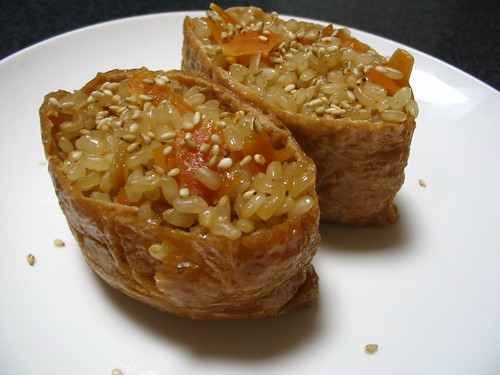Seoulfood
I got my first taste of Korean food in Japan - at Seoul BBQ near my old apartment - and since then I've been hungry for more. After visiting some great local Korean restaurants, experimenting with kimchi at home and browsing My Korean Kitchen when I should have been working, the next logical step was a trip to Korea, right?
I mean, it would have been a shame to have lived in Japan without visiting its closest neighbour. Seoul is less than 2 hours from Tokyo by plane - much closer than the northern Japanese islands. While my students took their midterm exams I booked a ticket, bought a guidebook and spent four days checking out the sights, sounds and tastes of Seoul.
This is what I ate...
My first meal off the plane was at Isaac Toast - a popular breakfast chain. The toasted sandwich with corn and egg omlette, ham, cabbage and pickles was pretty good, if a little greasy.

Chicken and ginseng rice porridge (juk).

Kkultarae candies - sugary threads spun around a honey nut mixture.

Bibimbap - Rice, veggies, beef and a spicy paste arranged in a hot stone bowl to be mixed and cooked through at the table.

Korean sushi (Gimbap/Kimbap) comes pre cut! I love it! Unlike sushi, the rice isn't seasoned with vinegar and they don't usually use raw fillings.

Tteokbokki - rice cakes in a sweet spicy sauce. I enjoyed these on my first night at a street still in Dongdaemun Market, accompanied by a can of 'Cass' beer. One of the best things I ate in Korea.

Odeng (the Korean version of Oden?) was served with my tteobokki. The broth tasted very clean and light, with none of the fishiness of Japanese oden.

Japchae - glass noodles and veggies in a light sesame soy sauce. After the spice overload they were really refreshing.

Hotteok - a donut like package filled with nuts, honey and cinnamon. It was quite different from the one I ate in Koreatown.

I bought these sweet, sticky rice crackers coated with sesame seeds from an old woman with a little stand outside the station, who good naturedly put up with my absolute lack of Korean. They were so good - just the thing to nibble on with a cup of green tea.

An apple blossom flavored tteok (rice cake) from Jilsiru Tteok Cafe, below the Tteok Museum. It was much more delicate than any mochi I've tried, filled with a slightly sweet paste and coated in coconut. Don't you think it looks a bit like coconut ice?

Sujong-gwa - a sweet spiced ginger punch with dried persimmon served ice cold and garnished with pine nuts. The first few sips were heavenly but it was a little on the sweet side after that.

A huge circle of crispy pan fried batter filled with octopus and nira (garlic chives) and served with a tangy slightly spicy soy dipping sauce. In Japan these Korean-style okonomiyaki are known as chijimi but I didn't manage to catch their Korean name. The English menu reffered to them as Korean Pizza, which they don't resemble in the slightest. *sigh* Sometimes I hate the English menu.

Galbitang - beef rib soup. The broth was incredibly meaty and savoury, but there wasn't a lot of meat happening on those bones. A generous heap of glass noodles and lots of veggies almost made up for that though.

The side dishes that same with my soup. With 2 kinds of kimchi, little fish cakes and the complimentary rice, I nearly didn't need my main dish.

Bibim Naengmyon - noodles in a cold, spicy broth. These look so delicious, but like all food sold at the airport they were pretty nasty. I should have stuck with ice cream.

One of the downsides of traveling alone is a lack of dining companions. I would have liked to splurge on an upscale restaurant one night or have a blow out yakiniku meal but my guidebook was pretty discouraging about dining solo. Not to mention cooking your meat by yourself feels a little too much like work. Ah well, next time.
Seoul was an incredibly friendly city and there was so much to do that I never found time for. Aside from the usual palaces and museums I was lucky enough to be there for the Lotus Lantern Festival in honor of Buddha's birthday, which was amazingly beautiful. I also visited a few foodie tourist attractions and took a cooking class where I made kimchi and a kind of bulgogi - pictures and recipes to come.









